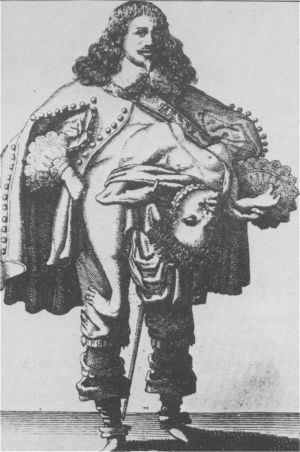Lazarus Colloredo and Joannes Baptista Colloredo (1617 – after 1646) were Italian conjoined twins who toured in 17th century Europe.
Medical condition
The twins were joined at the chest and Joannes Baptista was fully formed, but lacked vital organs and simply hung from his brother's body, though some signs of independent existence as movements of respiration or occasional rapid eye fluttering movements were observed. According to a later account by Thomas Bartholinus, if someone pushed the breast of Joannes Baptista, he moved his hands, ears and lips.
Life
The 17th Copenhagen century anatomist Bartholinus detailed the history of Lazarus-Joannes Baptista Colloredo quite diligently and personally observed the man for the purpose of documentation. Lazarus Colloredo and his parasitic twin, Joannes Baptista, were born in Genoa, Italy in 1617. To make a living, Lazarus toured around Europe and visited at least Basel, Switzerland and Copenhagen, Denmark before he arrived in Scotland in 1642 and later visited the court of Charles I of England. They also visited Gdansk, Turkey and Denmark, and toured Germany and Italy in 1646. When Lazarus was not exhibiting himself, he covered his brother with his cloak to avoid unnecessary attention.
Bartholinus first examined Colloredo when the twins were aged at twenty-two however he later amending his report when he was able to examine the twins in Scotland in 1642 just before they were to visit Charles I. Most accounts of the time described Lazarus as courteous and handsome man even with Joannes in tow and that must have been true because Bartholinus reported that Lazarus was married and the father of several children who were fully and admirably developed.
The brothers died in the late 1640s or early 1650s. A number of poems and songs were written about the twins, including Martin Parker's "Ballad of the Inseparable Brothers". Bondeson's The Two-Headed Boy includes a chapter about the Colloredos.

